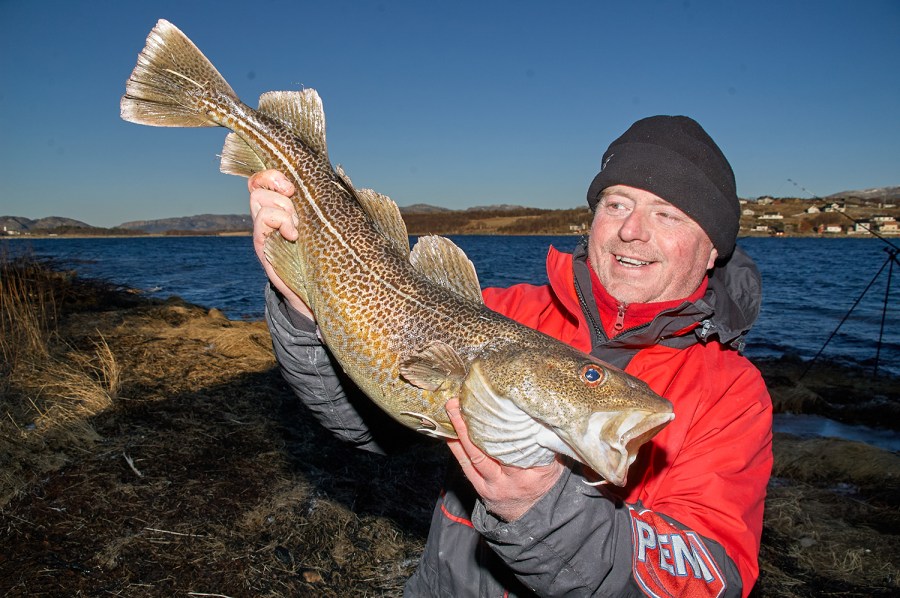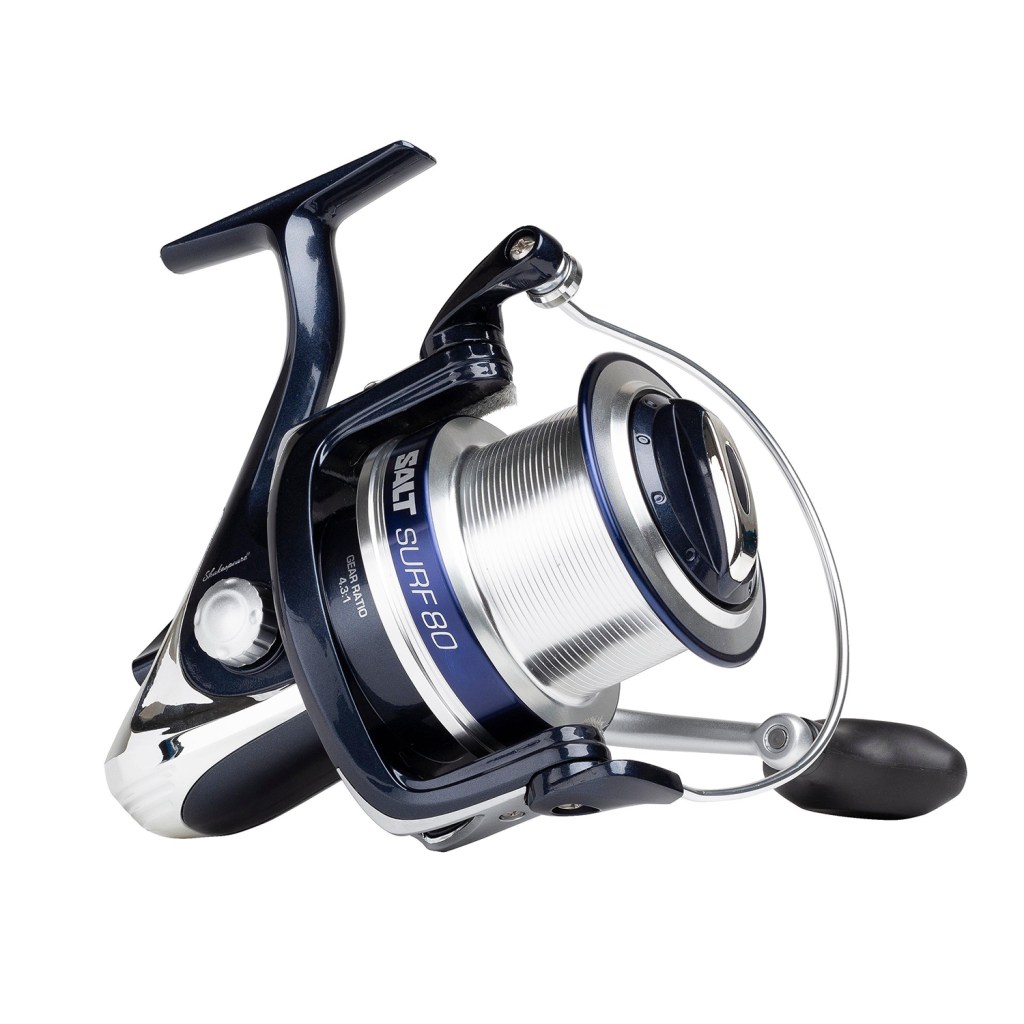SPONSORED CONTENT
Cod can be caught from the shore in Scotland and the North East of England throughout the year, but for most of us fishing south of a line drawn between Cumbria and North Yorkshire they are classed as an autumn and winter target
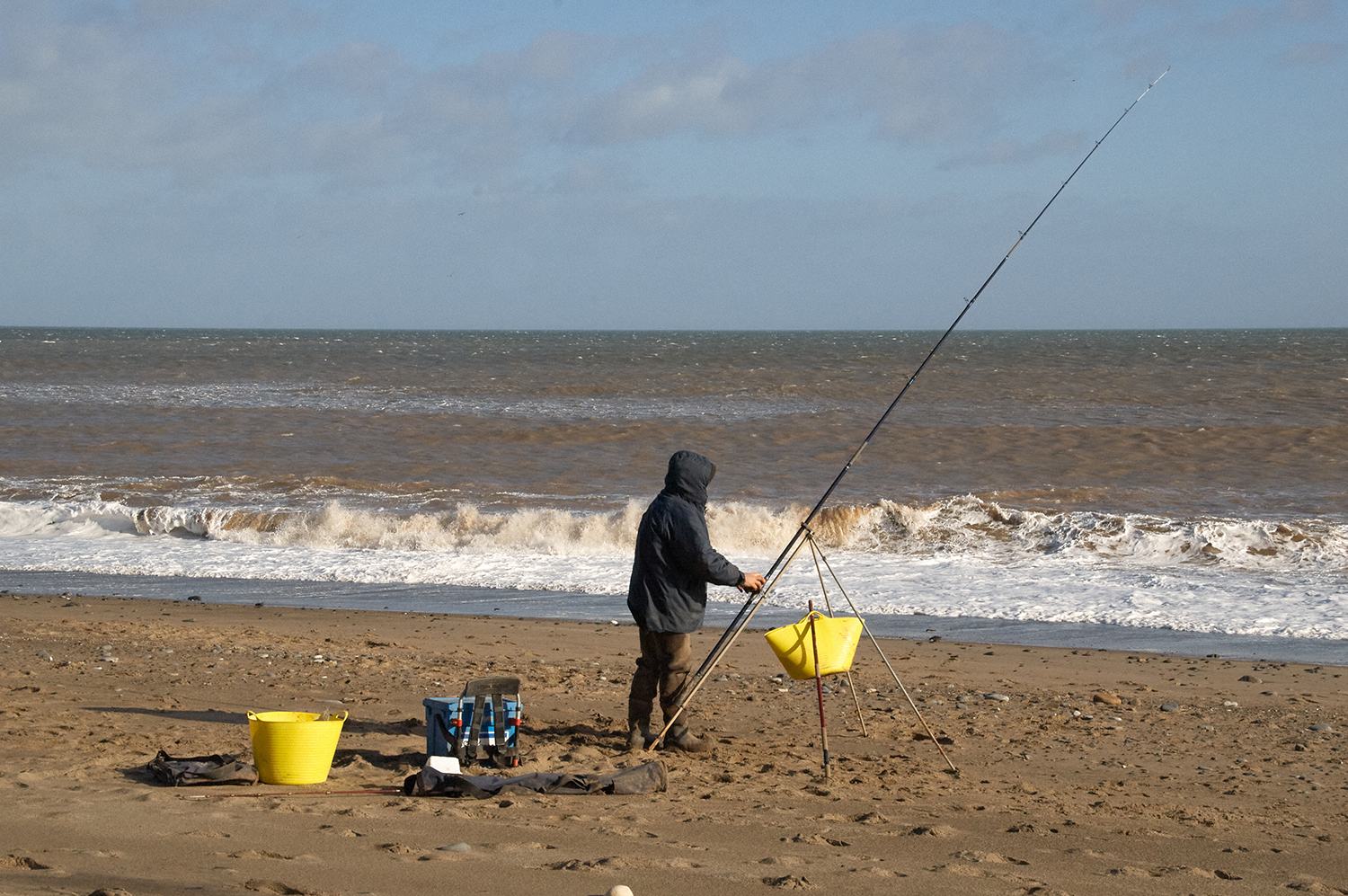
WHEN & WHERE TO FISH FOR COD
When fishing for shore cod, the first cod may show around mid-September, but their numbers won’t see a real increase until the first big tides in October. Their numbers increase throughout November through to Christmas when they will have peaked. These fish remain inshore through to late January but by February, except in the more northern areas, the majority will be gone.
In some areas, typically along the east coast of England, there can be a “spring” run that occurs from mid-March through to early May, but this has been less apparent in the past two decades.
Pretty much everywhere the best tides will be the building tides in the three to four days prior to the biggest spring tides. Once the tides peak and start to shorten, so too will the numbers of cod, generally speaking. This especially applies to beach fishing. If you are fishing from rocks or man-made structure into much deeper water, then the smaller neap tides can also produce.
Cod like rough seas with a good surf and swell, which washes food out of the ground. Winds off the sea create surf and swell and will draw in the cod. The best fishing tends to be just after a good storm has blown through leaving rough seas but with a dropping wind. Watch the TV weather forecasts that follow big depressions coming in from the Atlantic and aim to fish immediately the weather front passes through. Normally the wind will drop but the sea state remains rough resulting in the best opportunities.
Cod can be caught in daylight if there is good colour in the water. It is fact though, that night tides when low water and high tide both occur in darkness, invariably produce the best results bringing a greater number of fish within shore casting range.
Cod can be caught from clean sandy surf beaches, but a good tip is to look either for patches of rougher ground on the beaches, or deliberately fish rougher ground as this is where the bulk of the fish will be located. Rock scar fishing in Yorkshire and the North East sees anglers looking for channels to cast into between the rocks that will hold the cod.
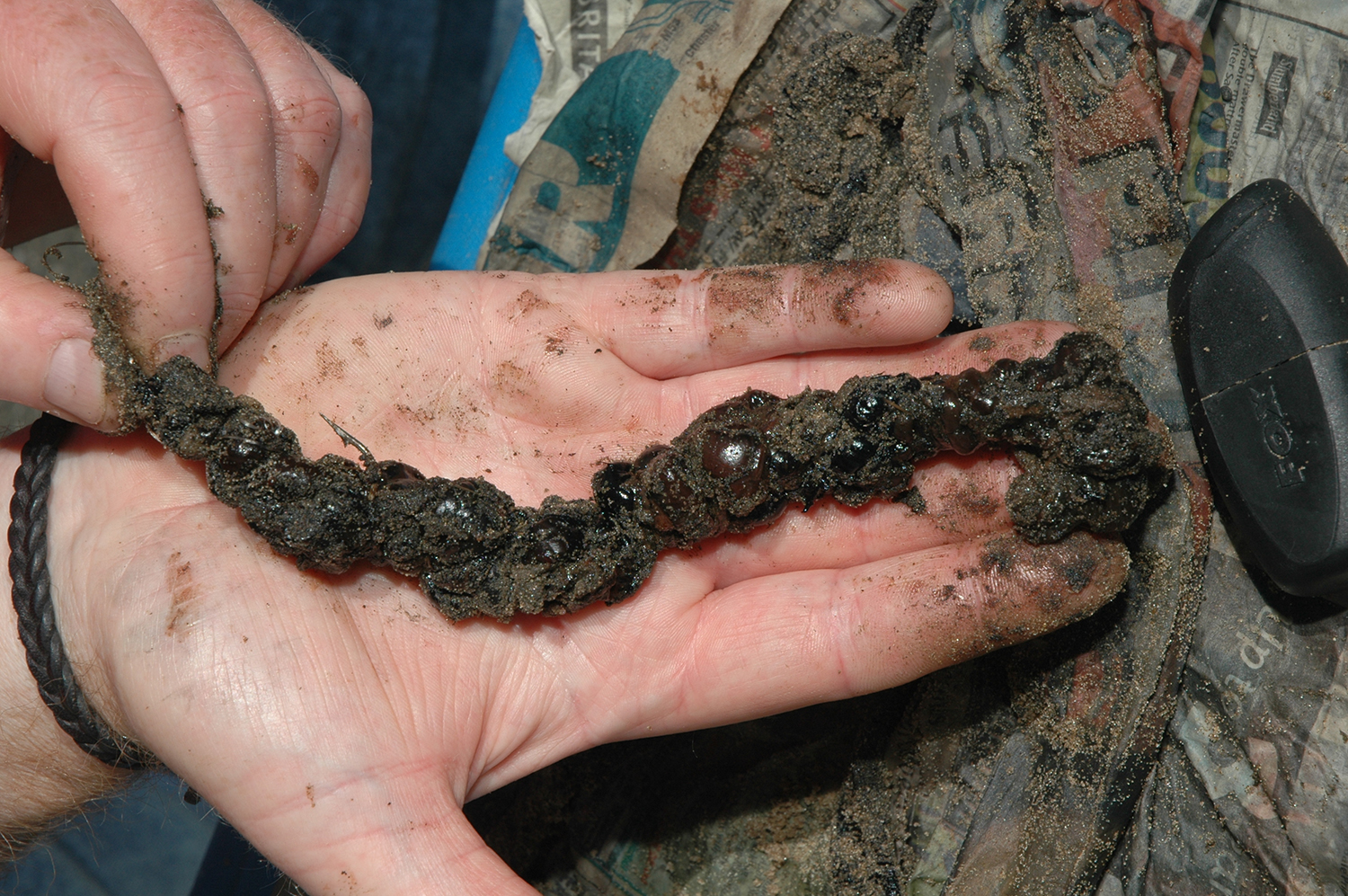
BAITS
Both the smaller blow lug and the bigger black lug are the top baits for codling and cod. If you just use blow lug, push three, four or five of them depending on size, over the hook and a little way up the hook trace to create a sausage shaped bait about five to seven inches long. Bigger black lug can be used whole the same way, but pinch off the sandy tail and mount the worm head nearest the hook point. Tipping black lug with blow lug also creates a highly effective bait. Ragworms work on their own but are better used as a tipping bait below black or blow lug.
Try mussels, especially when fishing close to rocks and in rough ground. Again, use several mussels and then bind them with bait elastic to form a bulky sausage shaped bait about three inches long.
After storms, razorfish can be a great bait fished on its own if fresh, or as a tippet below lugworm. Queen cockles wash ashore during storms and are a natural food of the cod, so finding a couple of these and using them as a tippet bait below lug can add extra fish to the catch. Peeler crab works at any time but is especially effective for early autumn and spring running fish.
Whole squid are also good, especially for the bigger fish, or try a strip of squid as a splint, secured with bait elastic, to the length of a lugworm bait leaving a short length below the bait to flutter in the tide.
Baits like lugworms and mussels can wash out very quickly in heavier seas. Change your baits every 15 minutes to keep the baits fresh and oozing out scent.
- Shakespeare SALT Surf 80 Fixed Spool Reel
- Shakespeare Salt Surf 423 3 piece rod
- Shakespeare SALT XT FS Surf 12ft 9in
TACKLE
For general surf fishing over clean ground look at the Shakespeare Salt Surf 393 rated to cast four to six ounces and with a length of 13ft. The longer 13ft length helps you to cast further into a head wind and keeps the line up above the inshore breakers better, thus reducing the chance of any floating weed collecting on the line. These rods are best fished with larger fixed-spool reels such as the Shakespeare Salt Surf 80 loaded with either 18lb mono, or 30lb braid and a 60lb shockleader.
Longer rods can help increase casting distance and for those looking for this advantage consider the Shakespeare Salt Surf 423, which is 14ft long and can cast up to six ounces of lead weight. This is a great rod when fishing heavier surf and when maximum casting range is required. Combine it with the larger Salt Surf 80 reel and load with 30lb braid and a 60lb shock leader and you have the ideal tackle.
If you’re fishing over rougher ground, then the extra power of the 13ft Shakespeare XT beachcaster capable of casting four to eight ounces has the power to cope with bullying bigger fish back through rough ground and weed. Again, go for the Shakespeare Salt Surf 80 fixed-spool reel and load with 40lb braid and an 80lb braid shockleader to maximise your bullying power.
The braid is a good choice for the main reel line because being thinner in diameter than mono and having no stretch dramatically improves bite detection, especially when long-range fishing into a heavy breaking surf, and will also cast well, being a thinner diameter than the mono.
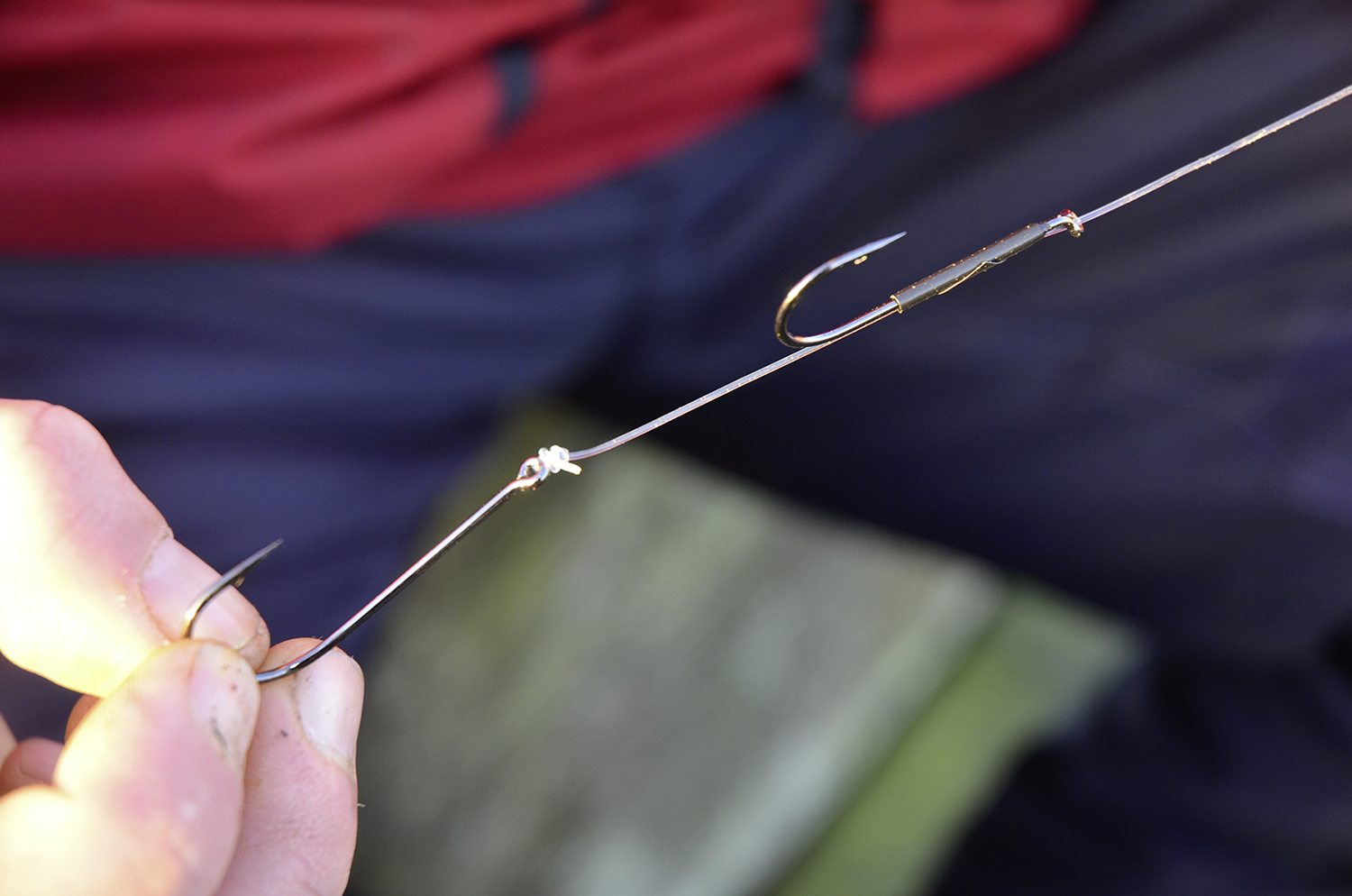
RIGS
A two-hook Pennell pulley rig covers most shore cod fishing. The second hook can be mounted by sliding the top hook on to the hooklength by the eye, then tying on the bottom hook as normal. After baiting up, slide the top hook down to just above the bait, wrap the hooklength around the hook shank three times and push the top hook into the top of the bait. Done like this the top hook can easily be adjusted accordingly to different lengths of bait.
Make the pulley rig from 60lb mono straight through, including the hooklength, for rough ground. Over clean sand add a swivel between the 60lb rig body line and a about 18 inches of 40lb fluorocarbon hooklength. Hooks should be a Viking pattern in size 4/0 for average baits, but size 6/0 for bigger baits like large whole squid or as a single hook when using bigger crab and mussel baits.
Shorter-shanked Viking pattern hooks will see fewer fish lost than when using long-shanked Aberdeens. With the long -shank hooks, the shank can often be half outside the mouth creating a leverage point and as the fish fights the hook can pull free.
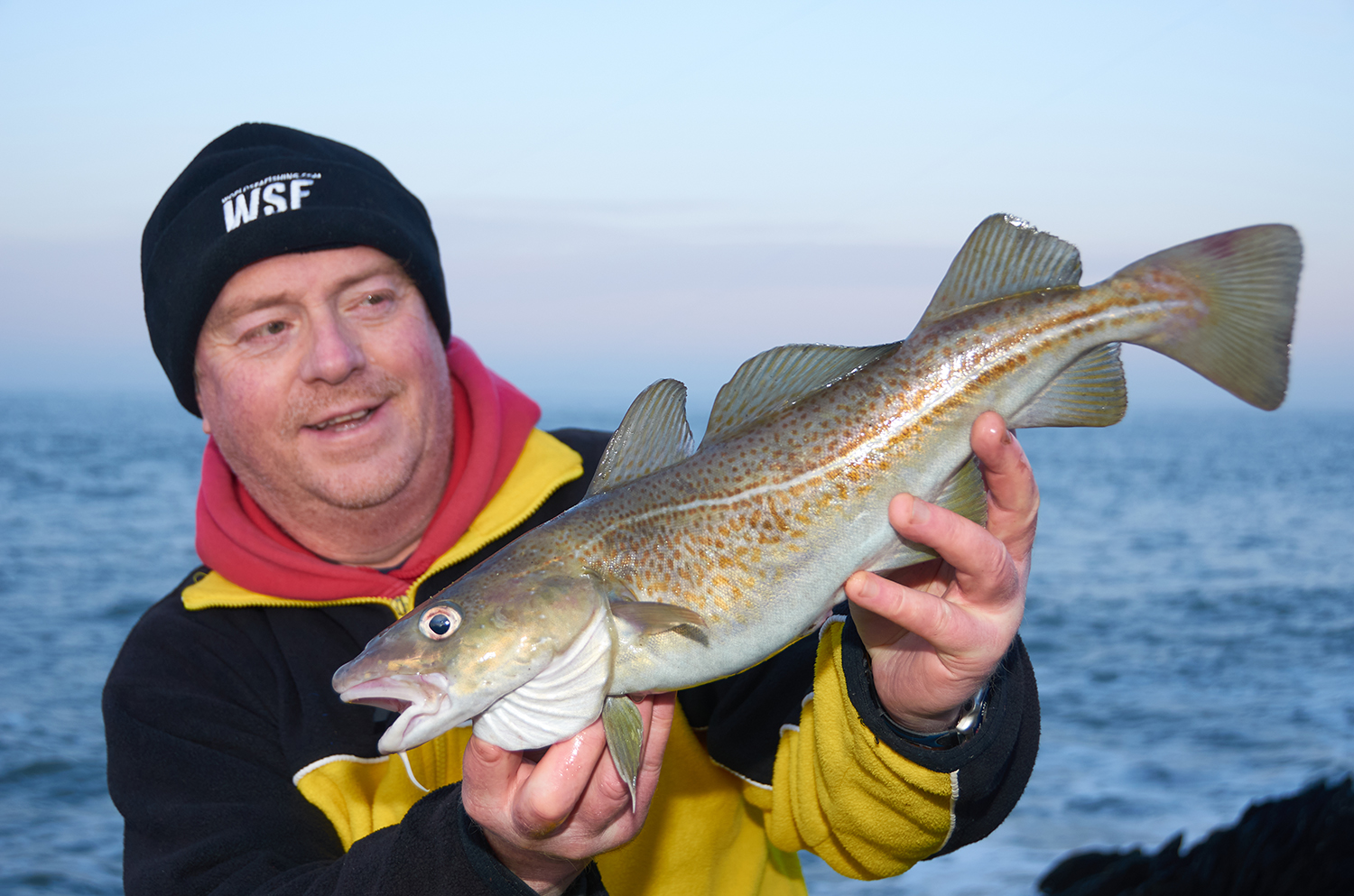
TECHNIQUE FOR FISHING FOR SHORE COD
Unless you’re fishing deep water expect the cod to be at long-range. They will move within 50 yards of the surf in medium surf conditions, but in rougher seas they tend to be further out. A good “seek the fish” system is to cast at long range to start. If no bites are forthcoming, drop each following cast a little shorter until you find the fish.
Checking out a venue at low tide and noting where the rougher ground is, alternatively where channels and gutters cross the beach, then casting close to or into these will see more fish caught than just fishing blind. Some beaches will fish well on the outgoing tide if there is rough ground towards the low water line. If you can reach this as the tide begins to drop, then you’re in with a very good chance.
Cod usually hook themselves against the weight of the lead. However, when you get a bite, even one that pulls the rod tip right down, lift the rod, wind in any slack until you feel the weight of the fish and pull the rod back to set the hook, especially when fishing at long range. Cod have bony mouths and hooks don’t always penetrate easily.

